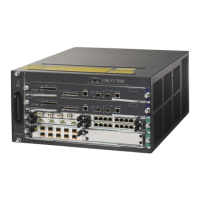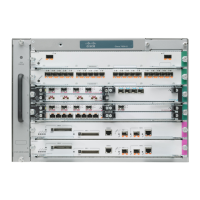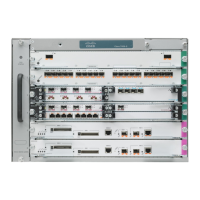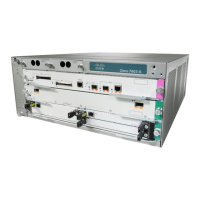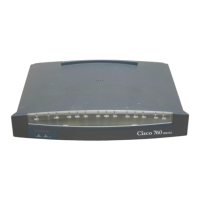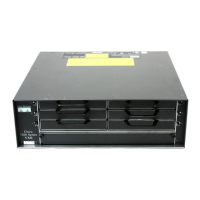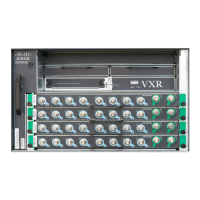22-2
Cisco 7600 Series Router Cisco IOS Software Configuration Guide—12.1E
78-14064-04
Chapter 22 Configuring RGMP
Default RGMP Configuration
Table 22-1 provides a summary of the RGMP packet types.
Default RGMP Configuration
RGMP is permanently enabled on Layer 2 LAN ports. RGMP is disabled by default on Layer 3
interfaces.
RGMP Configuration Guidelines and Restrictions
Follow these guidelines and restrictions when configuring RGMP:
• RGMP supports PIM sparse mode. RGMP does not support PIM dense mode. RGMP explicitly
supports the two AutoRP groups in dense mode by not restricting traffic to those groups but by
flooding it to all router ports. For this reason, you should configure PIM sparse-dense mode. If you
configure groups other than the AutoRP groups for dense mode, their traffic will not be correctly
forwarded through router ports that have been enabled for RGMP.
• To effectively constrain multicast traffic with RGMP, connect RGMP-enabled routers to separate
ports on RGMP-enabled Cisco 7600 series routers. (VLAN interfaces satisfy this restriction.)
• RGMP only constrains traffic that exits through LAN ports on which it detects an RGMP-enabled
router. If a non-RGMP enabled router is detected on a LAN port, that port receives all multicast
traffic.
• RGMP does not support directly connected multicast sources in the network. A directly connected
multicast source will send multicast traffic into the network without signaling through RGMP or
PIM. This multicast traffic will not be received by an RGMP-enabled router unless the router already
requested receipt of that multicast group through RGMP. This restriction applies to hosts and to
functions in routers that source multicast traffic, such as the ping and mtrace commands and
multicast applications that source multicast traffic, such as UDPTN.
• RGMP supports directly connected receivers in the network. Traffic to these receivers will be
constrained by IGMP snooping, or if the receiver is a router itself, by PIM and RGMP.
• CGMP is not supported in networks where RGMP is enabled on routers. You cannot enable both
RGMP and CGMP on a Layer 3 interface. If RGMP is enabled on a Layer 3 interface, CGMP is
silently disabled and vice versa.
Table 22-1 RGMP Packet Types
Description Action
Hello When RGMP is enabled on the router, no multicast data traffic is sent to the router by
the Cisco 7600 series router unless an RGMP join is specifically sent for a group.
Bye When RGMP is disabled on the router, all multicast data traffic is sent to the router
by the Cisco 7600 series router.
Join Multicast data traffic for a multicast MAC address from the Layer 3 group address G
is sent to the router. These packets have group G in the Group Address field of the
RGMP packet.
Leave Multicast data traffic for the group G is not sent to the router. These packets have
group G in the group address field of the RGMP packet.

